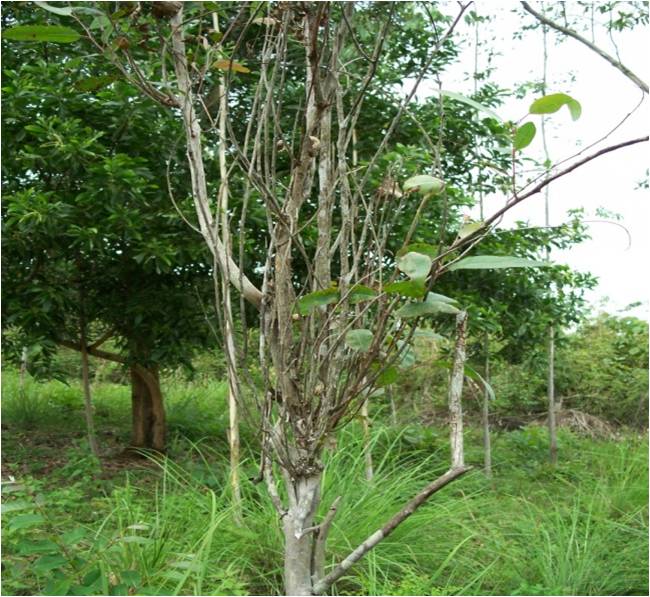This disease is caused by fungi in important tree species grown as plantations. The pathogen is widely distributed in the tropics and sub-temperate regions.
It occurs over a wide area in various parts of the world, attacking Eucalyptus and other tree species. In India it affects Eucalyptus citrodora, E. globulis, E. grandis, and E. tereticornis and other trees such as Acacia mangium, Khair, Neem, Dhak, Casuarina, Mango, Tamarind, Willow, Teak and Leucaena.
This disease is caused by Corticium salmonicolor.
1. Repeated die-back of saplings and young trees.
2. Girdling and death of parts lying above the girdled region.Widespread mortality of trees up to pole stage due to epidemics.
3. Development of epicormic branches from below the girdled region, one of which becomes the leader.
4. Cracking and splitting of bark, formation of canker and exposure of the sapwood.
5. Exudation of gum from the cankers.
1. In areas receiving high rains, species having resistance to this disease may be introduced.
2. Individuals showing a fair degree of resistance to these diseases in an infected plantation could be identified and bred for introduction on a larger scale.
3. Sprays of copper fungicides effective in controlling the disease on young plantations before and during the rainy season.
4. Diseased individuals must be removed from the plantation as early as possible.
5. Use of resistant varieties.
Pink disease problems on Eucalyptus clonal plantation




